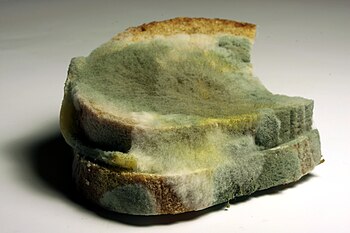466
 |
| Mold on bread (Photo credit: Wikipedia) |
Imagine a future where the packet of bread that you bought yesterday stays mould-free for months to come!
Rhizopus stolonifer, the most common form of fungus known to man, is the cause of moulds that grow on packed bread. The fungus is so common that all you need to grow it on a slice of bread is some moisture from the air. So, how do you save the opened packet of bread from the an attack of this proliferative fungus. A common method, followed in most households is storing bread in the refrigerator.
While this might slow down fungal growth for the bread you bought, shelf life of packed bread is quite short (usually 5 days). As much as 25% of all bread produced is discarded after 5 days leading to a large amount of food wastage globally. Bakeries tend to add more preservatives such as sodium benzoate, calcium proprionate, potassium sorbate etc. to increase shelf life. Increasing these concentrations not only affects flavour and texture of bread, but also considerably increases the risk of side effects that may result due to their consumption. Researchers at University College Cork (Ireland) addressed this concern by experimenting with usage of lactic acid bacteria (our friendly bacterium that converts milk to curd overnight) in bread production and achieved significant success on increasing the shelf life of bread to up to 14 days.
A spin-off company from Texas State University, called MicroZap has utilized its patented technology to increase the shelf life of bread to up to 60 days. MicroZap’s technology is just a sophistication of a household microwave. While a household micro wave uses radio frequency to heat your food, waves are scattered and bounce off walls of the instrument to create hot and cold zones leading to non-uniform heating. Researchers at MicroZap multiple sources of radio frequency to create a more uniform field of waves that, in the right dosage, can kill bacateria and fungus. Once the fungus is dead, the bread can stay mould free for longer duration.
The company also uses this technology to kill other common food pathogens such as E.coli, Salmonella, Listeria etc in dry food as well as meat products. An extension of this technology is also being applied to the laundry business where radio frequencies will be used to zap highly pathogenic bacteria such as MRSA (Methicillin resistant Staphylococcus aureus) commonly found in hospitals but difficult to treat due to resistance to the antibiotic.
In the near future, you can probably escape the dangerous fumes of extermination. Just a call to MicroZap should suffice.

